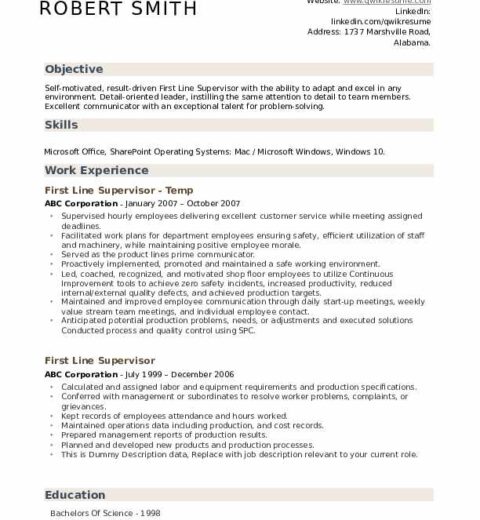When it comes to job hunting, how often do you pause and ponder: “What actually makes a resume irresistible to recruiters?” Crafting a compelling resume is akin to an art form; it requires a delicate balance of creativity and professionalism. The challenge is, amidst a sea of applicants, how do you ensure your resume stands out in a manner that’s both engaging and informative?
This article delves deep into the intricacies of resume creation, illuminating essential elements that can transform a mundane document into an attention-grabbing masterpiece. Let’s explore the anatomy of a superb resume that not only captures the interest of recruiters but also portrays your unique professional narrative.
Understanding the Basics: What is a Resume?
A resume is a succinct compilation of your educational background, work experience, skills, and achievements. It serves as your personal marketing tool, meant to present your qualifications in an accessible format. Essentially, your resume functions as the first impression you will make in your job application journey. Thus, it is paramount to curate it thoughtfully.
The Foundation: Choose the Right Format
First and foremost, deciding on the structure of your resume is crucial. There are several formats to consider: chronological, functional, and combinational. The chronological format lists your experiences in reverse order and is great for showcasing a solid work history. Conversely, the functional style emphasizes skills over experience, making it suitable for those with gaps in their career or changing disciplines. Finally, a combination of both allows you to highlight your strengths while providing context through your work history. The key is to select a format that complements your career narrative.
Making a Strong Start: The Header
Your resume header is not merely a formality; it should encapsulate who you are with clarity. Include your full name prominently at the top, accompanied by your contact information, which typically features your phone number, email address, and LinkedIn profile. This section should be crisp and unadorned yet professional. Do not shy away from using a bold font or a slightly larger size to make it stand out.
Engaging Summary: The Summary Statement
Following your header, insert a powerful summary statement. This brief paragraph should encapsulate your career trajectory, notable achievements, and professional aspirations. Aim for two to three sentences that convey your unique value proposition. The summary is your elevator pitch condensed into written form; thus, it should compel recruiters to read further.
Detailing Experience: Work History
When listing work experiences, emphasis is vital. Start each entry with your job title, followed by the company’s name, location, and dates of employment. Then, beneath each role, employ bullet points to list your responsibilities and achievements focusing on quantifiable results. For instance, rather than stating, “Managed a team,” opt for: “Successfully managed a team of six, increasing productivity by 30% over six months.” Utilizing action verbs such as “implemented,” “developed,” and “spearheaded” infuses dynamism into your descriptions, making them resonate with impact.
The Importance of Skills: Highlighting Core Competencies
Core competencies form the backbone of your resume. Identify skill sets that are directly aligned with the job description you’re pursuing. Categories could include technical skills, soft skills, languages, and relevant certifications. This section provides an opportunity to tailor your resume for specific roles, ensuring that the most pertinent skills catch the recruiter’s eye.
Education: Showcase Your Academic Background
In cases where education strongly complements your application, it is essential to delineate it effectively. Include your degree, the institution’s name, and the graduation date. You may also highlight relevant coursework, honors, or extracurricular activities. However, for seasoned professionals, this section can adopt a retrogressive order or be abbreviated to accommodate the focus on professional experience.
Additional Sections: Adding Value
Consider including additional sections to round out your resume. These could encompass volunteer work, professional affiliations, publications, or awards. Each addition should bolster your candidacy and demonstrate well-roundedness. Recruiters are often on the lookout for candidates who engage beyond their primary career, reflecting their commitment to continuous personal growth.
Tailoring for Every Application
Perhaps one of the most vital steps in resume creation is the practice of customization. Each job application should be met with a revised resume that addresses the specific language and requirements outlined in the job posting. Utilize keywords from the description to enhance matching with Applicant Tracking Systems (ATS) while ensuring your resume remains engaging for human readers.
Visual Appeal: Design and Layout
The aesthetic aspect of your resume cannot be overstated. A clean and organized layout enhances readability. Opt for a balance of white space and text to prevent the resume from appearing cluttered. It allows the recruiter to absorb the information quickly. While it is prudent to maintain professionalism, tasteful use of color can add a unique touch that reflects your personality and industry standards.
Proofread with Precision
Perhaps the most detrimental mistake one can make is submitting a resume riddled with typos or grammatical errors. Proofreading is non-negotiable. Enlist a trusted friend or professional to review your document, or utilize proofreading tools to ensure impeccable accuracy. A polished resume signals attention to detail—a quality highly prized by employers.
Conclusion: Make Your Mark
In an era where first impressions are often shaped by digital documents, a compelling resume is indispensable. By adhering to the principles outlined above, you can create an irresistible resume that not only garners the attention of recruiters but also lands you interviews. Remember, your resume is more than a collection of experiences; it’s a reflection of your professional brand. So, are you ready to take on the challenge and craft a resume that makes a powerful, lasting impression?




